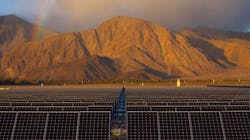Utility Interest in Microgrids is Up: What’s Driving the Trend?
In the last year, Bobbi Dillow-Walsh has seen utility requests for Block Energy’s microgrids increase four- or fivefold.
Dillow-Walsh, vice president of commercial development and sales operations for Block Energy, is fielding utility requests not only from capacity-constrained California – as in the past – but from all over the country.
Utilities are looking at microgrids for serving new residential communities and other customers. Under the Block Energy model, utilities own the microgrids that deliver power to new residential communities.
Utilities interested in non-wires alternatives
The utilities often are seeking microgrids as non-wires alternatives (NWA) to address utility congestion challenges. They’re also looking ahead at ways to replace aging fossil-fuel plants that are slated to go offline, she said.
Non-wires alternatives use distributed energy resources (DERs) and microgrids to defer or replace the installation of more traditional “wires and poles.” When utilities choose NWA, they often save ratepayers money by avoiding investments in costly infrastructure. By utilizing DERs at the local level, they provide flexibility and resilience. They may also cut carbon emissions through the use of renewable energy that avoids fossil fuel-fired plants.
While utilities aren’t specifically asking for NWA, their requests fit the NWA model, said Dillow-Walsh. “They are looking for sources of generation to adequately serve load with front-of-the-meter microgrids.”
Inflation Reduction Act helps utilities deploy microgrids
In addition to focusing on NWA, some utilities are taking advantage of the benefits of the Inflation Reduction Act (IRA) to lower the costs of their projects.
Municipal utilities, especially, see the IRA as an opportunity to lower the cost of deploying microgrids, give microgrids a test and learn about their advantages, said Dillow-Walsh. BlockEnergy systems are eligible for a 30% investment tax credit under the IRA because they include solar, storage, controls and electric vehicle (EV) charging.
IRA benefits can help utilities looking for new ways to serve customers, according to Allen Schurr, chief commercial officer at Enchanted Rock, a microgrid provider.
“Utilities are seeking more cost-effective alternatives to achieving reliable power delivery,” he said.
Utility interest sparked by storms and hurricanes
In the past, microgrids have generally been installed by third-party developers at behind-the-meter facilities such as colleges and hospitals. But utilities are seeing the financial, safety, renewables integration and reliability benefits of microgrids. This is especially true as the number of storms and hurricanes increases.
“Utilities have been evaluating non-wires alternatives for several years and are starting to deploy them in limited areas,” said Schurr. “We are in discussions with utilities about how large-scale microgrids can help them better serve communities vulnerable to being cut off from the grid due to damage from storms.”
With microgrids, hundreds of thousands of customers can be protected from breakdowns in utility transmission infrastructure, he added.
Microgrids for EV charging
Electrification efforts are also driving utility interest in microgrids. At least three utilities — Pacific Gas & Electric (PG&E), Portland General Electric (PGE) and Florida Power and Light — have plans to deploy microgrids to take advantage of EV batteries’ ability to support the grid and to help meet the increased demand for electricity from EV charging.
In their efforts to deploy cost-effective, reliable solutions, utilities must find ways to justify to regulators the cost of deploying microgrids, said Peter Asmus, executive director at Alaska Microgrid Group. At issue before regulatory commissions is whether microgrids benefit all utility ratepayers or just a select few.
Regulators’ role in moving microgrids forward
However, if microgrids are pitched to regulators as NWA, they may be more likely to gain approval, Asmus said. For example, San Diego Gas & Electric (SDG&E) has been able to move forward with front-of-the-meter microgrids that provide wildfire mitigation that benefits ratepayers, Asmus said.
Regulators approved the first utility sponsored microgrid in the U.S. – in Borrego Springs, California – based on the fact that it was an NWA, he said.
SDG&E deployed the microgrid in 2013 to improve energy resilience for the roughly 2,800 people in Borrego Springs, which is served by a 60-mile power line that can be cut off because of storms, fires and high temperatures. The microgrid was considered a lower cost option to serve the remote high desert community when compared to a traditional line extension, said Asmus.
SDG&E is expanding its portfolio of microgrids to high-risk wildfire regions in desert communities.
New ways for utilities to take advantage of microgrids
Utilities are also looking at innovative ways to deploy microgrids at customer sites to benefit customers outside the microgrid. For example, PGE makes use of energy storage situated on the premises of its customers. Under two PGE pilot partnerships, the utility owns and deploys batteries behind the meter at customer sites, and the customers provide solar and other on-site resources to create microgrids. At the Beaverton Public Safety Center, the battery provides grid services to PGE during normal operations and the microgrid provides resilience to the safety center during emergencies.
And some nonutility microgrids are playing an important role supporting the utilities when demand increases because of heat. During the summer of 2022, microgrids kept the lights on in a small California community surrounded by wildfire, supported the Texas grid during power emergencies, islanded to relieve stress on the California power system and helped an Oregon military facility meet its air conditioning needs when temperatures soared.
This summer, some microgrids stepped up even more. Enchanted Rock’s microgrids supplied more than five times the power they did in August 2022 to support utilities, said Schurr.
Microgrids are playing many roles in helping utilities provide reliable, clean, cost-effective electricity.
“In short, microgrids are a building block for utilities to reimagine their place in the electricity supply chain by leveraging DER in new and exciting ways,” according to a Guidehouse Insights whitepaper, “How Utilities Can Be Microgrid Leaders.”
Track news about microgrids. Subscribe to the free Microgrid Knowledge Newsletter.
